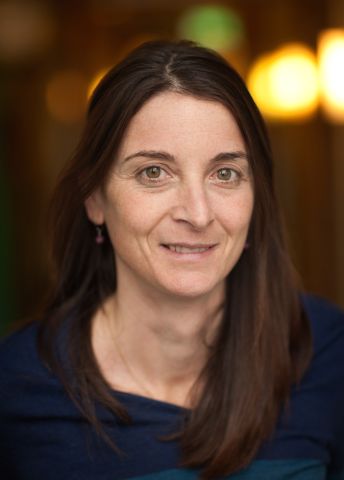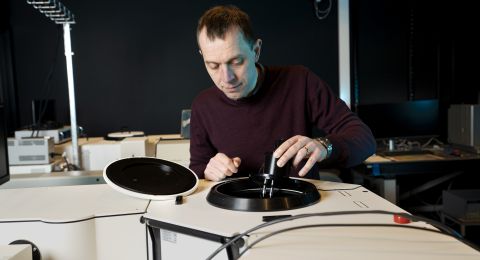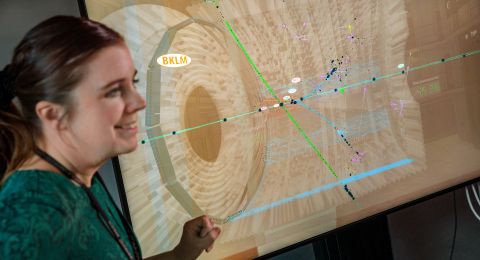Diatoms and nitrogen-fixing cyanobacteria living in the world’s oceans play a key role in nitrogen and carbon cycles. Rachel Foster is studying how this symbiosis works at molecular level. This knowledge may aid understanding of plant evolution as well as our future climate.
Rachel Foster
Associate Professor in Microbial Oceanography
Wallenberg Academy Fellow 2013
University:
Stockholm University
Research field:
Metabolic interactions in planktonic symbiosis
Ever since her days on the beach during childhood summers Rachel has been passionately interested in the sea and its organisms. But it was a research voyage from Florida to San Salvador that decided her career. She gained a master’s in marine environmental science from Brook University in New York and then began research into how marine organisms interact with one another.
“The marine expedition was a fantastic experience and I’ve been true to the feelings I had then ever since. I really do love being out on the sea. I get all my research ideas from the observations I make there.”
Rachel is examining symbiosis and nutrient exchange between nitrogen-fixing cyanobacteria and diatoms. Symbiosis is where two or more organisms live together, often in a dependent relationship. These close relationships are found everywhere in nature, and have played a key role in biosphere development. One example is that of chloroplasts, the organelles in plants and algae where photosynthesis takes place. Organelles are the cell’s equivalent to bodily organs. Chloroplasts are the vestiges of an ancient fusion of a single-cell photosynthetic cyanobacterium that lived in symbiosis with another single-cell host organism, Rachel explains.
“We can see a similar symbiosis today between single-cell marine diatoms and nitrogen-fixing cyanobacteria. In time this could result in the development of a new type of organelle, in this case one that fixes gaseous nitrogen. It is extremely fascinating and may help us to understand more about the evolution of organelles.”
Hard to find
Nitrogen is needed for life to exist, but its availability is low in much of our seas. There, the main source of nitrogen is the organisms capable of fixing gaseous nitrogen in the atmosphere and converting it into a biologically available form of this element.
Diatoms themselves are not able to convert nitrogen gas; they are wholly dependent on the nitrogen-fixing ability of cyanobacteria. They combine to form the massive blooms seen in seas around the world. But to date there has not been much interest in understanding how these two microorganisms interact.
“This might be because you need a microscope to see and identify them. They can’t be seen from satellites because they live just under the surface of the sea.”
The specific type of cyanobacteria that Rachel is studying does not choose to live in the open sea; it is usually found in brackish water or coastal areas.
“It may be that we are seeing evidence of co-evolution. These organisms have formed a partnership and moved out into the open sea.”
The research team Rachel is leading will soon be moving to new facilities on Stockholm University’s main campus. She has previously researched at the Max Planck Institute for Marine Microbiology in Germany.
“But I was here a couple of times while I was studying for my PhD, and learnt electron microscopy so that I could study cells at a higher resolution.”
Since then Rachel has continued to develop her findings by combining studies of organisms under conventional microscopes at sea with the latest molecular techniques and with mass spectrometry.
“It is a fantastic opportunity and a milestone in my career. I can now formulate and conduct research into a series of major issues that I have long pondered but have not had the financial or technical resources to develop.”
Diatoms control metabolism
A stone’s throw away is the Swedish Museum of Natural History, whose basement houses the Laboratory for Isotope Geology and a device for studying charged particles – a spectrometer.
“We use it to analyze the fundamental components of an individual cell, and visualize fixing and transfer of nitrogen and carbon between organisms. Our findings suggest that diatoms can control the metabolism of cyanobacteria.”
Rachel explains enthusiastically that the instrument can provide images of cells that are only 25 – 50 thousandths of a millimeter across.
“Many people ask me what the cyanobacteria get out of the relationship. Thanks to this technique I can now say that, aside from a free home, they probably get carbon from diatoms – energy needed to fix nitrogen. It is highly reminiscent of symbiotic relationships on land.”
Climate impact
About 75 percent of the Earth’s surface is covered in water. Greater understanding of how diatoms and cyanobacteria interact adds to our knowledge of nitrogen and carbon cycles, and about our climate.
“When diatoms die they fall to the bottom and act as a carbon sink. We hope to perform experiments to see how these organisms respond to some of the conditions expected in the seas of the future.”
The cells Rachel is studying are obtained from seas in warm tropical climes. She agrees that it is a challenge that the samples are so far away. But the support from the Knut and Alice Wallenberg Foundation and access to a number of advanced instruments in Stockholm and Uppsala make Sweden a perfect place for marine research of this kind.
“The tools I am currently using as a microbial oceanographer are absolutely incredible, and they are getting better and better and more interesting all the time. It really is a great time to be a researcher.”
Text Susanne Rosén
Translation Maxwell Arding
Photo Magnus Bergström






